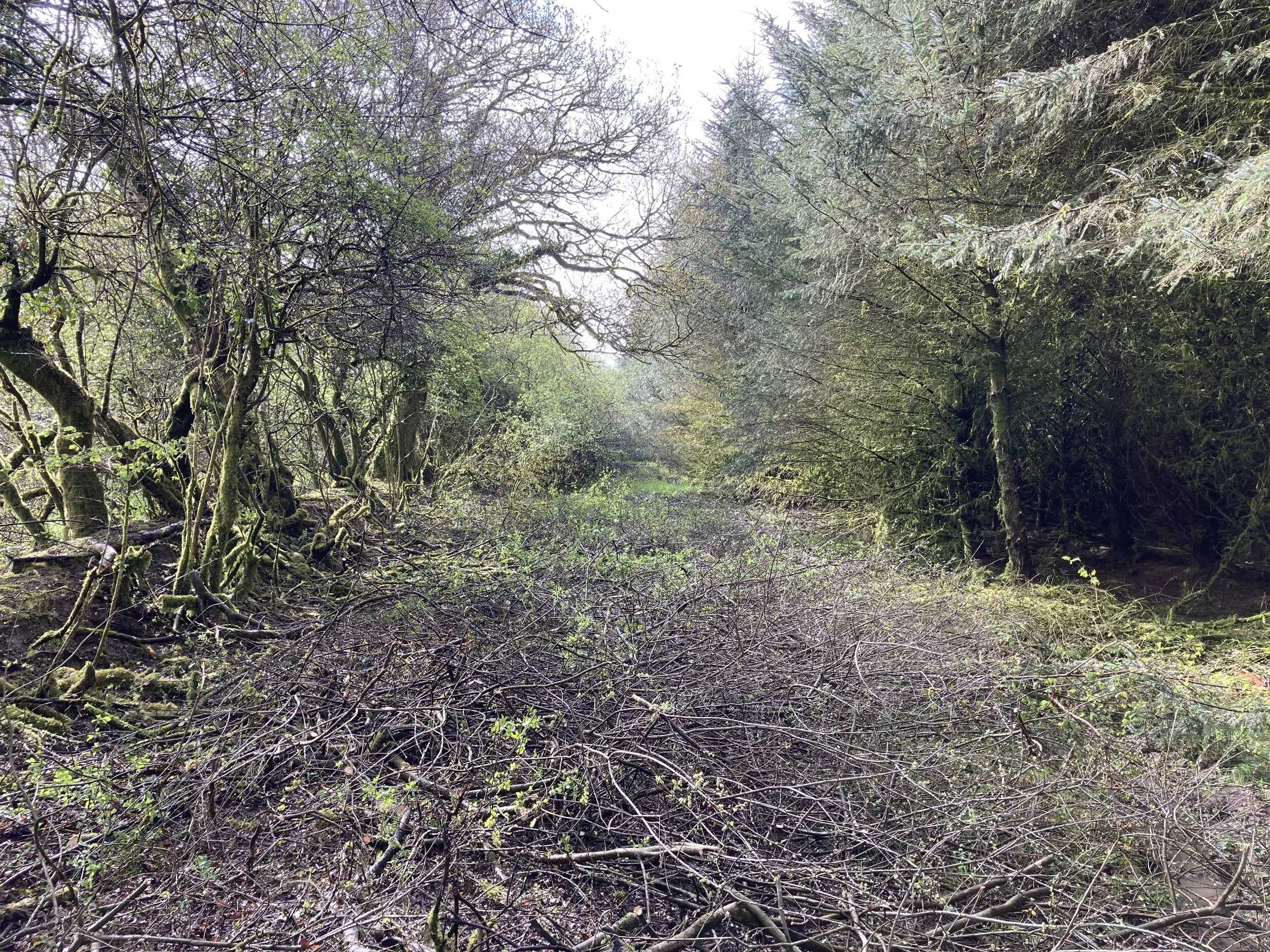Low Impact Timber Extraction
Following the loss of some Larch through wind blow, the owner wanted the wind blown trees felled and extracted. The area is wet and as the woodland is weighted heavily towards conservation we wanted to leave minimal sign and impact. We hand cut the wind blow larch with a combination of hand winch and chainsaw and then used a compact tractor and small timber trailer to extract the 2.5m lengths to the yard for onward sale.
The trailer, whilst simple is perfect for this type of operation. Carrying 1500kg of timber a time the impact on the ground was very low. By ensuring the hand cutting left low and tidy stumps, access is well within this set ups capabilities, even when the trees where originally planted on plow lines.



Trail Camera Survey
This is a montage of one week’s trail camera footage collected recently. As can be seen the Red Stags are rapidly growing this year’s antlers. These youngsters are all looking in good condition.
Countryside Stewardship Grants - Deer Control and Management
Grants are now available for Deer control and management as well as grey squirrel control. Worth checking out and discussing with your local FE Woodland Officer.
https://www.gov.uk/countryside-stewardship-grants/ws1-deer-control-and-management
https://www.gov.uk/countryside-stewardship-grants/ws3-squirrel-control-and-management
We can help out with deer management plans and habitat impact assessments, as well as taking on the deer and squirrel cull where required.
Deer Health and Welfare
Regularly walking around and watching the deer is still the most important part of deer management. Looking at the numbers, condition, how they are reacting, what they are eating is all vital information and is key to ensuring the deer management plan is being continually reviewed.
Repairs to failing deer fencing.
The deer fencing in this area is getting to the point where it is failing in various places as the posts rot and the wire fails. This area had seen a heavy use by Red deer. We repaired the fence to make it secure for livestock and security. We placed horizontal railings either side of the hedge to ensure the deer can jump with a reduced risk of getting snagged in the wire. The wire beneath this has been opened up sufficiently to allow young deer to cross as well.
Using deer fencing to protect woodlands should be carefully considered and should only really be used as a last resort. Other methods of deer management, can achieve a better result.
Tree planting last Autumn
Last autumn saw us out tree panting following the clear felling of a commercial crop. we acted for our client in a supervising capacity for some Canadian sub-contractors who where planting this area. Ensuring the logistics of these jobs are well set up makes the job efficient.
Wind Blown Larch
This was an area of Larch planted approximated 20 years ago. Unfortunately is was the wrong sub species planted and the root structure is not sufficient to withstand the winds for wet clay soils. The owner was keen to have it cleaned up, but did not want it all removed. There where also other tree species within the area which had been planted at the same time which attracted a sentimental value. We felled the vast majority of the wind blown larch to make the area safe and usable. Root plants where returned to the horizontal and stumps where taken as low as possible. The timber was hand stacked in areas accessible for extraction by tractor/trailer reducing the impact on the remaining trees. Dealing with multi stem wind blow can be time consuming and complex, but with the right approach, is not too onerous. We try to ensure the costs involved can be offset to some degree by selling the timber. This is already seeing natural regeneration of other tree species including oaks.
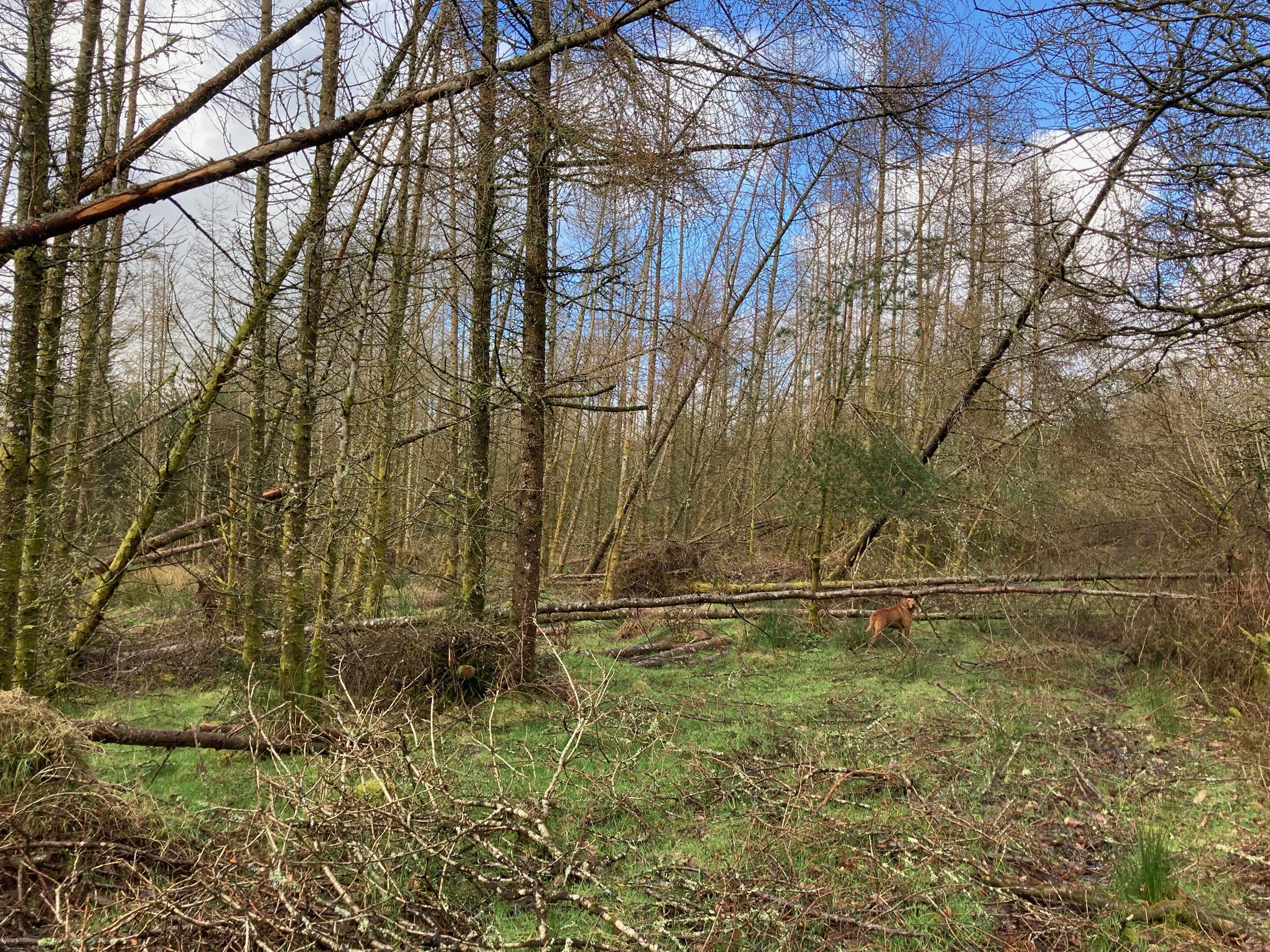
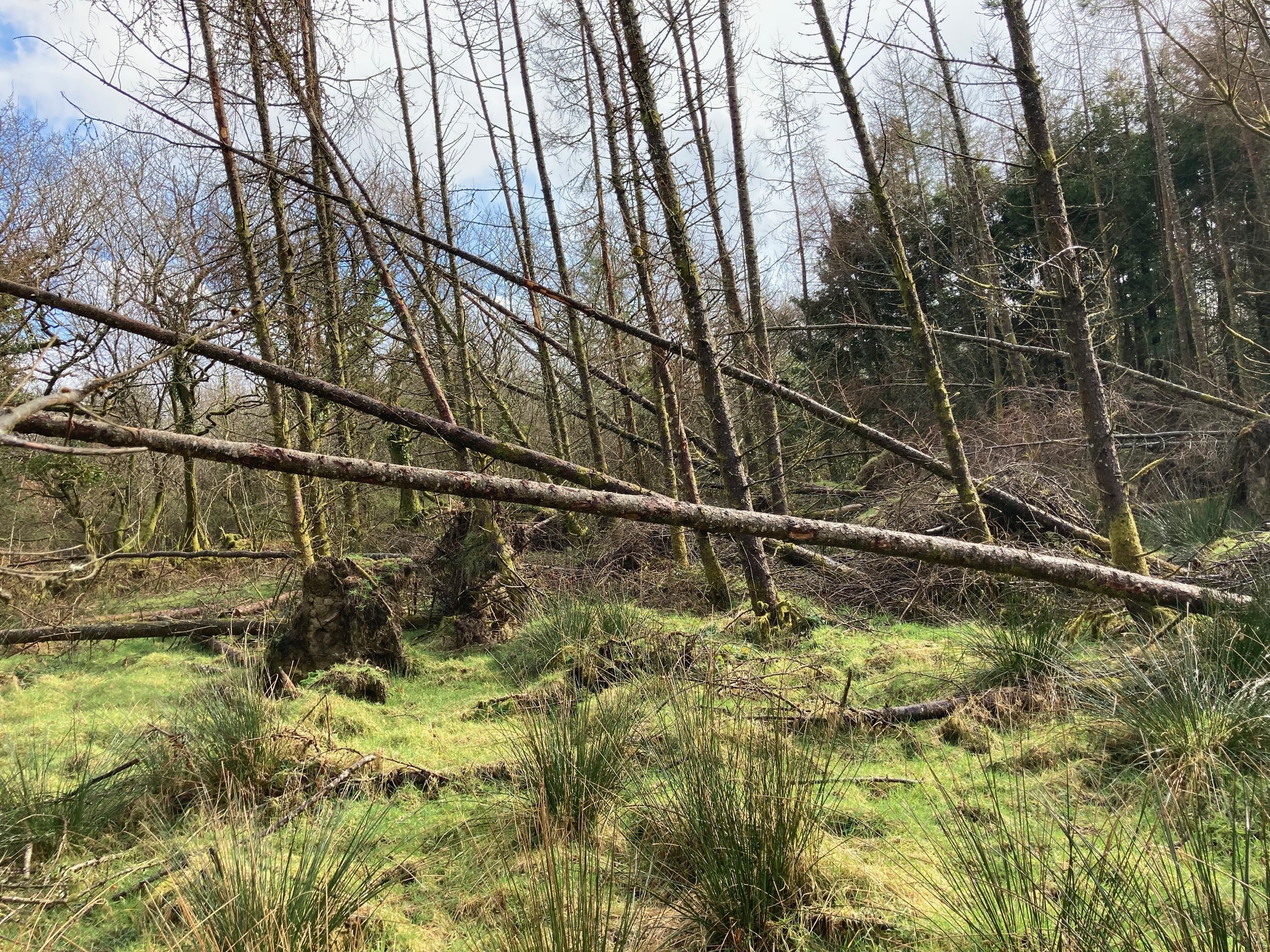
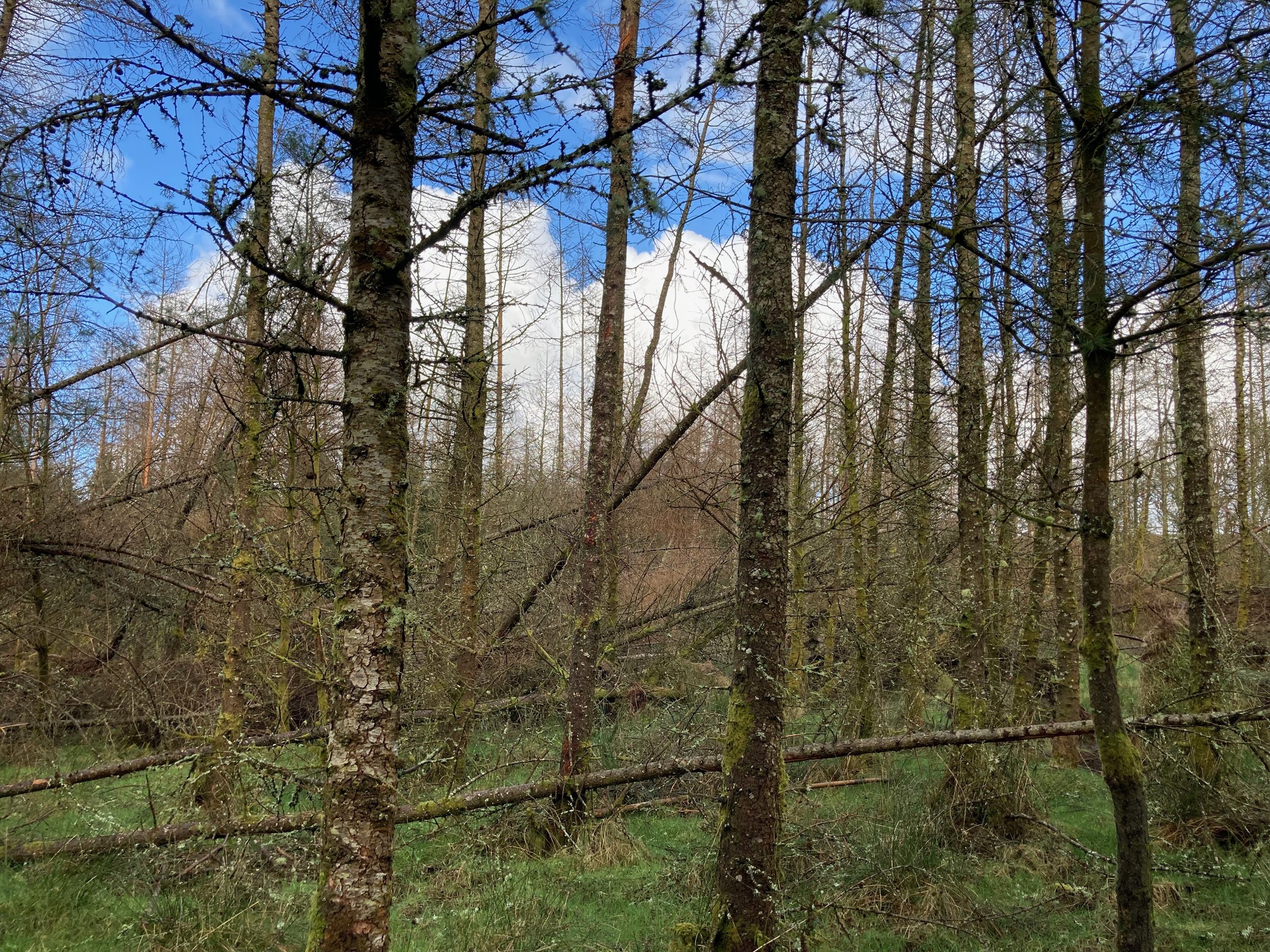
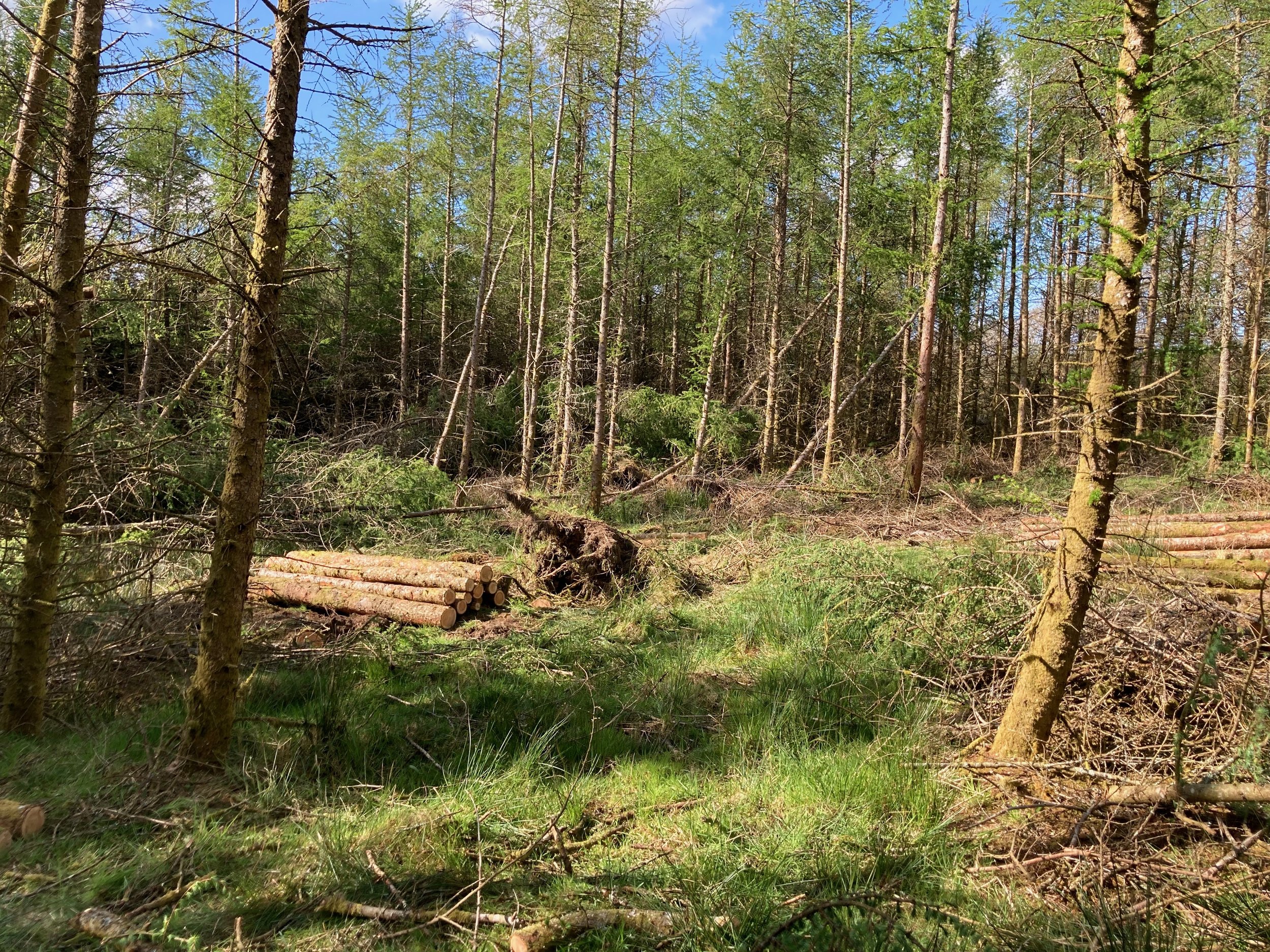
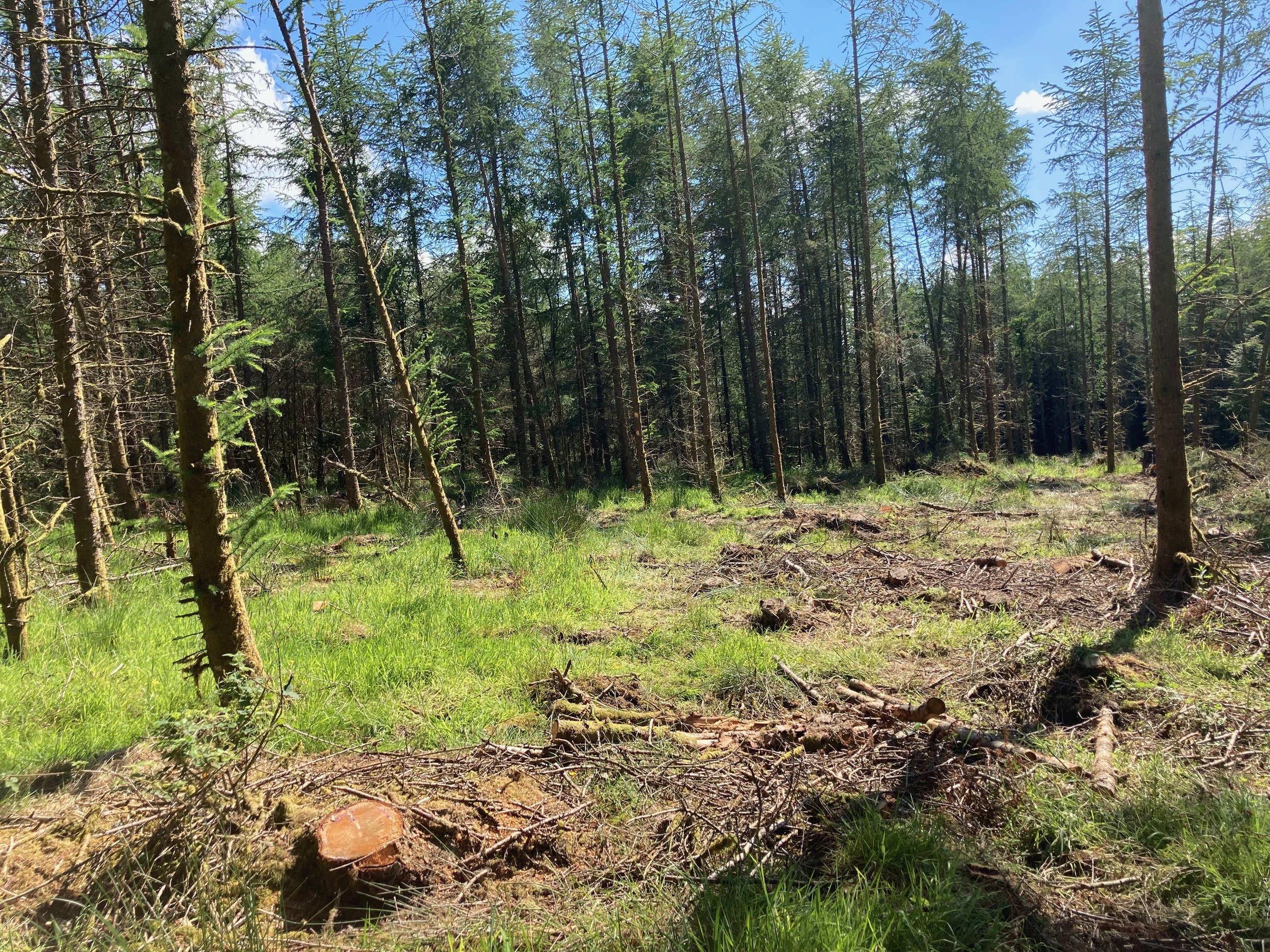
Sitka Thinning and Ride Improvement
This small area of Sitka required first thinning. The area is relatively small and prone to strong winds. The ride had become overgrown and little light was entering it and thus reducing the biodiversity value of the ride. We removed a sufficient amount of timber to open up the ride. We left the ends narrower to allow for a reduction of wind velocity once through the wind hardened edge trees. The brash was matted across the ride to allow for minimal ground compaction once the area was dry enough for extraction. This allowed the main work to be done outside the nesting season, and the timber was left for a couple of months until it was dry enough to extract by tractor/trailer combination.
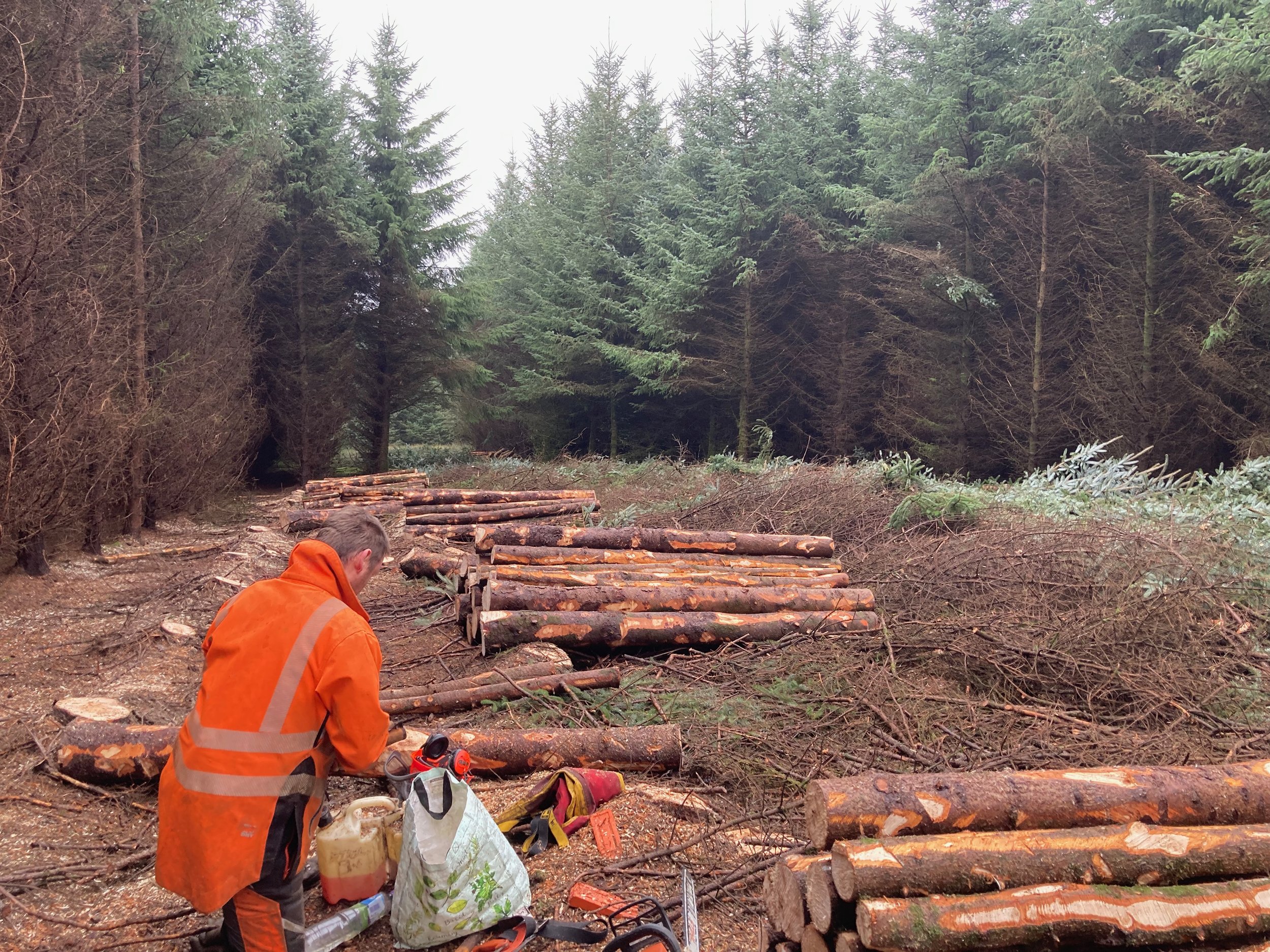
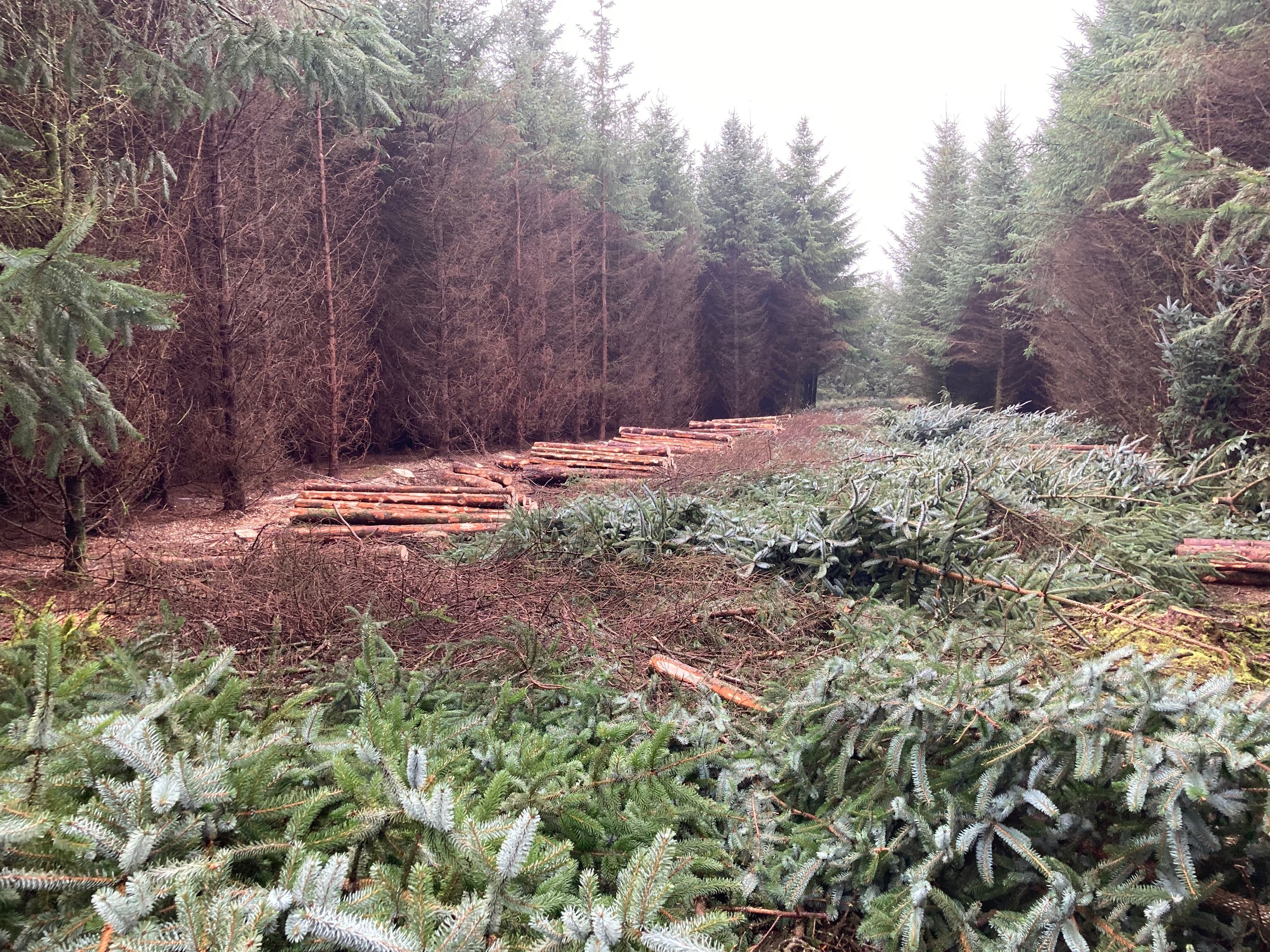
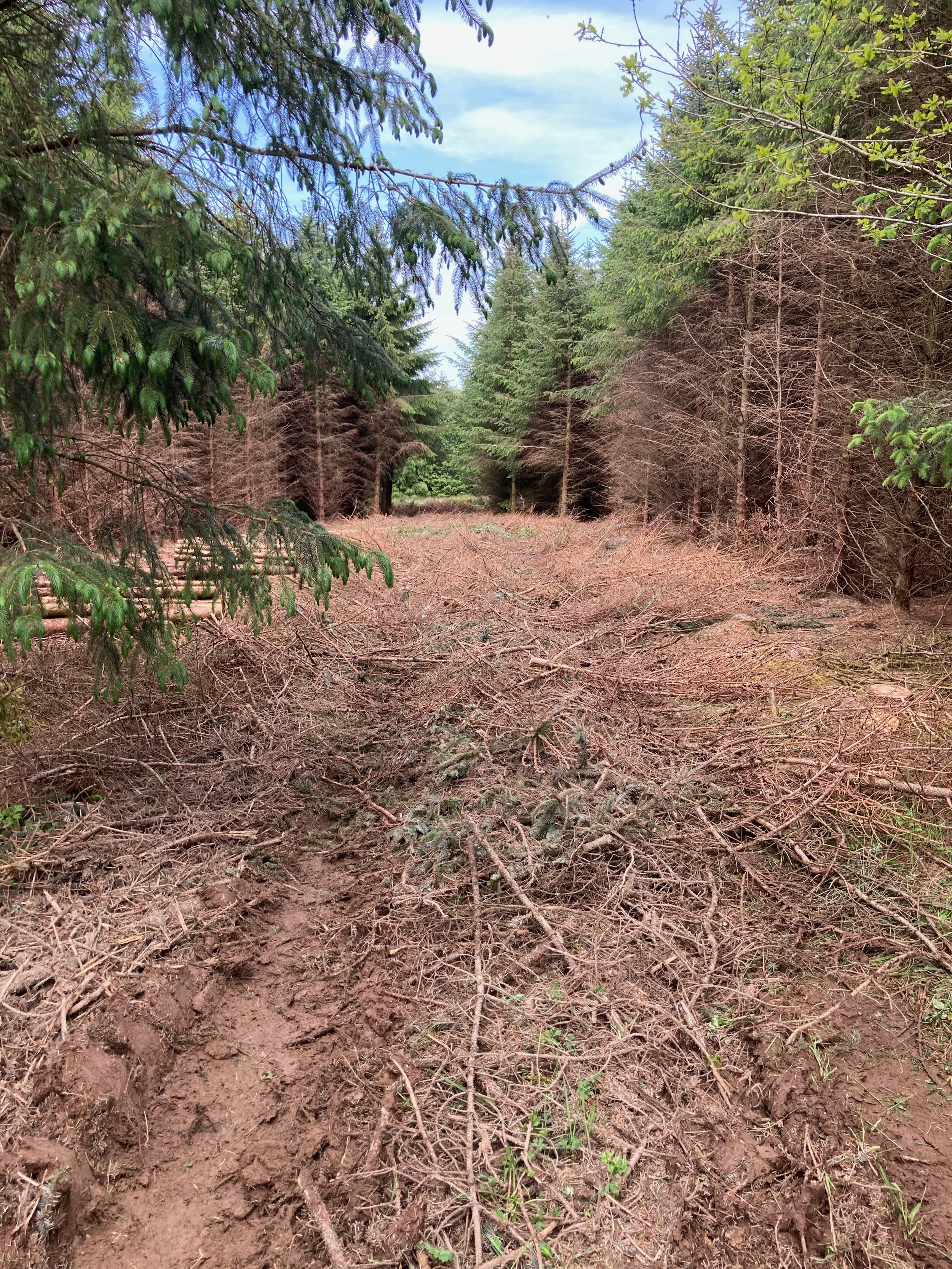
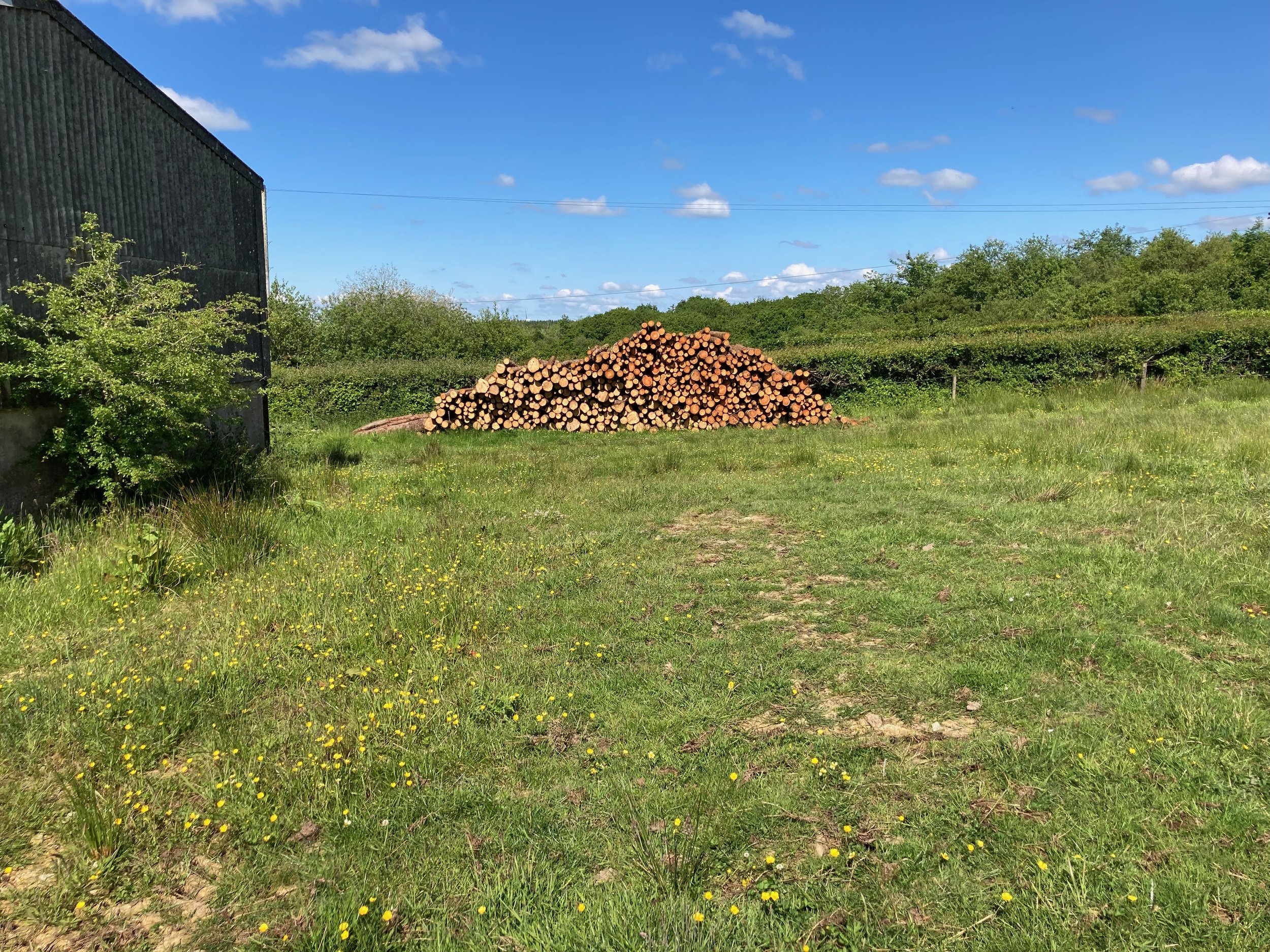
Woodland Rides
We’ve been making the most of the dry spell to get on top of some much needed ride maintenance. Woodland rides, whilst providing a logistics function, also provide a complimentary habitat to the woodland structure. The area below in the photos had grown over from mostly Goat Willow, to mean the ride was almost impassable on foot. By clearing the overgrown scrub, light has been increased which will promote growth of a host of wild flowers which will support a variety of fauna. In addition to that, the owner can now mulch the debris with a flail topper and clear the ditches to promote drainage.
Ideally woodland rides should be designed to be a minimum width of the tree height, with a cutting plan which allows a variety of flora to grow. However where this isn’t possible then other options may still be of benefit.
The photos below show the ride mid clearance, where the water has found it’s own path, and the finished job ready for mulching.
Red and Roe Deer Trail Camera Clips Montage
This is a montage of trail clips from an area we are managing. It is a relatively small woodland surrounded by farmland. The Sitka Spruce has reached a level of growth where it is offering optimal cover for the Red Deer and this group of Stags has taken up residency. With Stags numbers in the wider area at a lower level than seen for a while, we are planning on using a range of options to manage the impact the deer are having on the commercial crop and habitat, which reduces the cull requirement. The first thing that has been done was to establish some rides which have been seeded with wildflowers which should germinate this year. Alongside this we are going to trial a special seed mix with the plan of providing a higher value browse food source.
As can be seen in the clips the older Stags have already cast their antlers whilst the younger Stags have yet too cast. The White Stag is a beast surrounded by folklore and mythology.
Four Roe Does
We have been managing this area for a client for a couple of years now. It is a small area (<50 acres) of commercial conifer woodland. There has recently been an area planted up with young Hemlock, however the main crop is Sitka Spruce, which has suffered from aphid attacks over the last few years. The deer (both Red and Roe) are very transitory in this area. Deer management becomes a challenge in these areas as resident population and thus cull plan is impossible to work out, particularly as neighbouring land owners have differing views to how the deer should be managed. The approach we take in places such as these is to maintain a frequent visit plan to maintain stalking pressure and thus prevent any populations holding in the immediate area. Selection of cull animals is very much based on looking at the condition of the animal, as one would with livestock, and only taking the poor quality individuals. Trail cameras in these areas are invaluable in understanding the activity levels.
Woodland Rides and Ash Die Back
We’ve been busy felling Ash trees which where suffering from Ash Die Back disease (Hymenoscyphus fraxineus). It is quite sad felling such magnificent trees, however due to the proximity to public footpaths and the significant risk the public, the trees in the area needed to be felled.
However, the felling can become a good opportunity to incorporate woodland rides and glades which offer great diversity for wildlife. These areas that have been felled can be turned into such areas with a minimal amount of additional work.
The Forestry Commission published a 21 page guide in July 2005 which gives an idea what could be done as part of the obsolete English Woodland Grant Scheme. A copy of which can be found at the hyperlink below. Hopefully, the new Environment Land Management scheme financially encourages these areas to be created.




